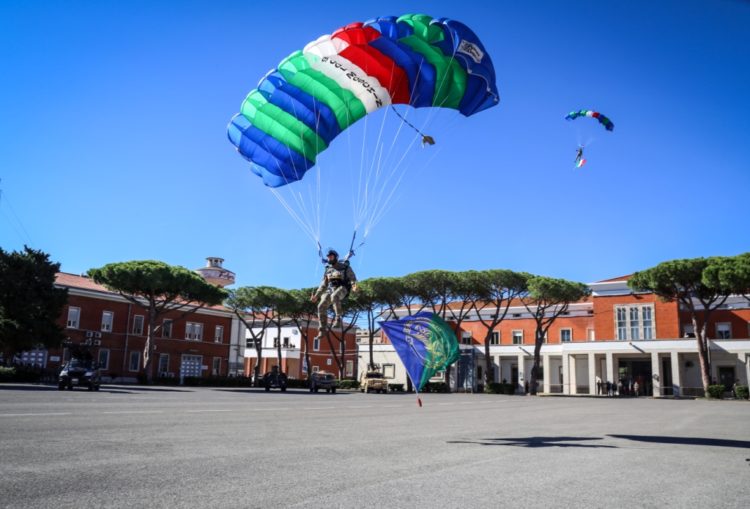
The 9th paratroopers assault regiment, Col Moschin, took another step toward the recovery of those traditions that founded the history of one of the most prestigious units of the Italian Army.
On the occasion of the 40th anniversary of the Army Special Intervention Unit’s formation, the “Ninth” will soon change the color of its glorious maroon beret to replace it with the more traditional grey-green–a style that belonged to the first formation, the Special Platoon.
In 1952, a young paratrooper lieutenant, Franco Falcone, explored the idea of forming a small nucleus of specialized soldiers, taking inspiration from World War II‘s Italian special units. This concept, initially accepted with some perplexity by both the Army and the Navy, became reality with the establishment of the first post-war special forces department, the Plotone Speciale. This small group of bravest was assigned in April, 1953 to the Infantry School of Cesano, then transformed into a Paratrooper Saboteurs Company under the command of Captain Edoardo Acconci.

At that time, the Saboteurs wore a grey-green beret, typical of Italian airborne troops who fought in the desert of El-Alamein, but also of the daring X Arditi battalion. This beret was regulation wear until the 1960s, when the Folgore paratroopers brigade–the unit merged with the Ninth–adopted the Maroon headdress, a symbol that identified most of the paratrooper’s regiments of the world.
The Ninth was always different from the other Folgore’s units–a discrepancy resulting from the special training to which the first Saboteurs were subjected. Also, in the field of traditions, the Ninth’s history stands out in front of any sector of worldwide Special Forces; this direct lineage from the Arditi Units of World War I is unique, especially when compared to other better known but younger units, such as the British SAS or U.S. Green Berets.
From the 1960s on, the Col Moschin began a journey aimed at the recovery of its origins: certainly not an easy operation, characterized by external prejudices due to a military past that condemned to oblivion the men’s bravery and instead exalted their political affiliation (Communist or Fascist). If there’s one characteristic that distinguishes the Raiders is their hard-headedness–they know how to struggle with obstinacy and commitment to achieve their goals. After several tortuous stages, the Ninth achieved important results: from the war flag of the IX Arditi, to the black uniform’s stripes, and lastly, the new badge with the Gladio in 2014.

Now the Raiders reinforce the honor of their history by adopting the grey-green beret of their 1950s-era uncles. It’s a reflection of its preparation even in the historical field, knowing how to accept a challenge, adapting to every circumstance, but with a mind always projected to the improvement not only of the individual, but also of the entire sector. These characteristics don’t need symbols, they don’t need any recognition of cloth or metal. This is simply the character inherent in every Raider who, with humility and dedication, teaches and never stops learning.
Already have an account? Sign In
Two ways to continue to read this article.
Subscribe
$1.99
every 4 weeks
- Unlimited access to all articles
- Support independent journalism
- Ad-free reading experience
Subscribe Now
Recurring Monthly. Cancel Anytime.














COMMENTS
You must become a subscriber or login to view or post comments on this article.